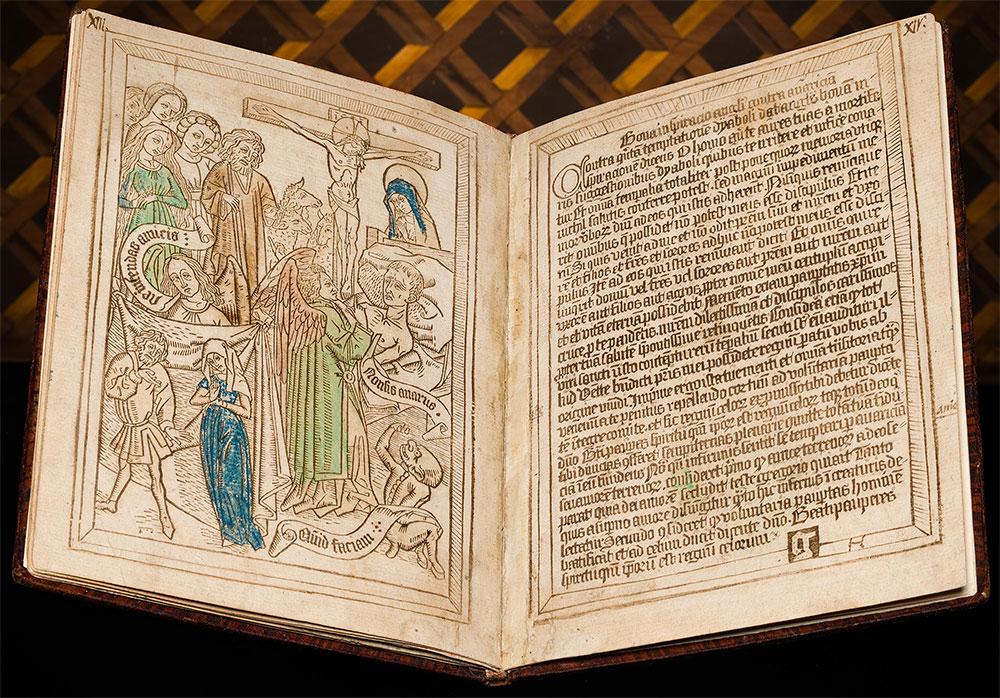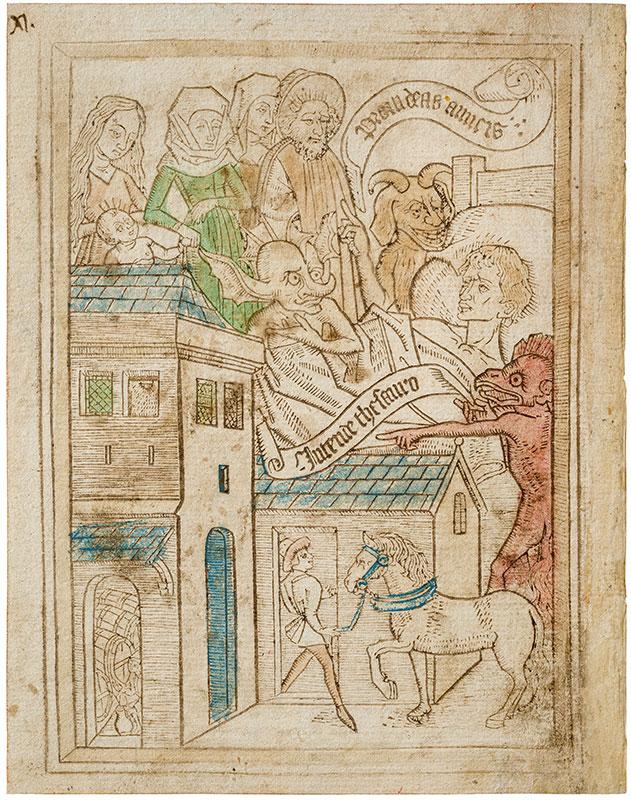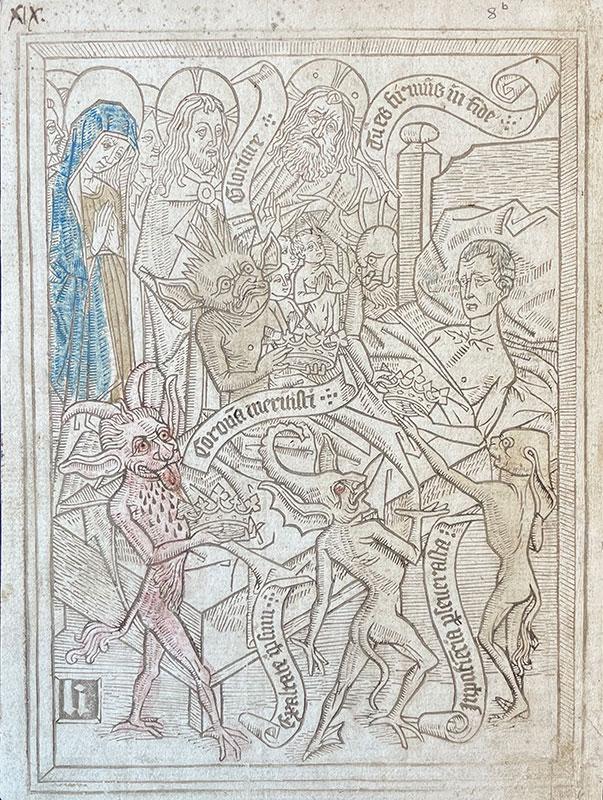The Morgan recently acquired a rare copy of the Ars moriendi blockbook, printed in the Netherlands about 1467–69 (identified in the literature on blockbooks as edition IIA, that is, the first state of the second edition). This fragmentary copy—only fifteen of twenty-four total leaves—was in a private collection in Belgium. Exceptionally, the Morgan already held the nine leaves missing from this singular copy. Our acquisition of this fragmentary blockbook reunites the two parts, thus forming the only extant complete copy of this monument to early European printing. The acquisition was made possible through the generosity of T. Kimball Brooker, Martha J. Fleischman, Mr. G. Scott Clemons and Ms. Karyn Joaquino, Marguerite Steed Hoffman and Tom Lentz, and Mr. and Mrs. Lawrence R. Ricciardi.
Blockbooks were printed entirely from woodcut, with both the text and images cut into wooden blocks. They first appeared in the early 1450s in the Netherlands, approximately the same time that Johannes Gutenberg was beginning experiments with printing with movable type in Mainz, Germany, about 250 miles away. For more on European blockbooks and the Morgan’s collection, see the links at the bottom of this page.
The Ars moriendi (Art of Dying) is a Christian devotional work that follows a dying individual as they are tempted by demons with various sins (lack of faith, despair, impatience, vainglory, and avarice) then consoled and supported by saints and angels until their final redemption and death. The Ars moriendi was incredibly popular in late medieval Europe appearing in manuscripts, blockbooks, printed books, as well as individual woodcuts and engravings (without text). In fact, the entire graphic series may have been initiated in engravings designed by the Master E. S. (German, active 1450–67) around 1450.
The Morgan already owned nine leaves of the Ars moriendi IIA (PML 3), which had been purchased by J. Pierpont Morgan in 1902 from Richard Bennett, a manufacturer and book collection in Manchester, England. Bennett had acquired the nine leaves from a rare book dealer in Germany in 1900. I was the first to recognize that the Morgan’s nine leaves were the missing leaves from an incomplete copy previously in the Count of Schönborn’s collection in Pommersfelden, Germany, afterwards in a private collection in Belgium. In comparing Figures 2–3 with Figure 4, you can see that the sporadic coloring of the images is consistent across the two sets of leaves, as is the older Roman numeral foliation in the top corners, all of which indicate that these two sets of leaves previously formed a single copy. The Morgan-Schönborn copy is now the only complete copy of Ars moriendi IIA in the world, with only another fragmentary and damaged copy of this edition at the Noord-Hollands Archief in Haarlem, Netherlands.
The Morgan holds the largest collection of blockbooks in the United States with nineteen examples (from complete copies to fragmentary copies/individual leaves). The last blockbook acquired by the Morgan was in 1923, spearheaded by J. Pierpont Morgan’s librarian, Belle Greene, who described the book as “absolutely necessary” for the collection. Maintaining the traditions set by J. Pierpont Morgan and continued by Belle Greene and J. P. Morgan, Jr., the Morgan once again adds to its collection of literary rarities by preserving the only complete copy of an exceptional blockbook, which represents an artistic step in the Western development of printing technology.
Several of our blockbooks have already been digitized:
- Biblia pauperum (PML 1.1–2)
- Apocalypsis Sancti Johannis (PML 8)
- Apocalypsis Sancti Johannis (PML 21786)
- Canticum canticorum (PML 21990)
Related posts: European Blockbooks:
- Print-on-Demand in the 15th Century
- Color and Curious Creatures: Fifteenth-Century Block Books at the Morgan
- Color and Curious Creatures: Fifteenth-Century Block Books at the Morgan, Part II
John T. McQuillen
Associate Curator, Printed Books & Bindings
The Morgan Library & Museum




